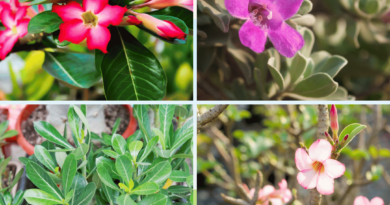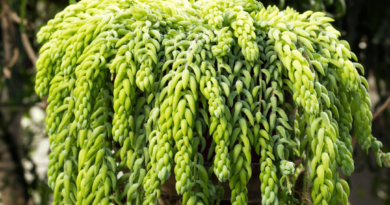Echeveria Identification: Different Types of Echeveria Succulents
Are you an avid gardener looking to expand your collection of succulents? Or perhaps you’re simply curious about the different types of Echeveria succulents that exist. Whatever the case may be, identifying Echeveria succulents can be tricky, especially for beginners.
Echeveria Identification: Different Types of Echeveria Succulents
Echeveria is a genus of succulent plants that belong to the Crassulaceae family. They are native to Mexico and South America and have gained popularity worldwide due to their unique beauty and ability to thrive in a wide range of climates.
There are over 150 different types of Echeveria succulents, each with distinct characteristics and features. In this section, we’ll explore some of the most popular Echeveria types and how to identify them.
- Echeveria Agavoides

Echeveria Agavoides are one of the most popular Echeveria types, known for their rosette-shaped leaves and striking colour. The leaves are thick, pointed, and have a reddish-pink hue, making them stand out in any garden.
Identification tips:
Rosette-shaped leaves
Thick, pointed leaves
Reddish-pink hue
- Echeveria Imbricata

Echeveria Imbricata, also known as Blue Rose Echeveria, is a stunning succulent that is perfect for indoor and outdoor gardens. Its leaves are arranged in a compact rosette and have a blue-green colour, making it a unique addition to any collection.
Identification tips:
Compact rosette
Blue-green colour
- Echeveria Perle Von Nurnberg

Echeveria Perle Von Nurnberg is a popular hybrid Echeveria that is known for its striking colour and unique leaf shape. Its leaves are a blend of pink, purple, and blue and have a powdery coating, making them appear almost velvety.
Identification tips:
Unique leaf shape
Pink, purple, and blue leaves
Powdery coating
- Echeveria Pulidonis

Echeveria Pulidonis is a stunning Echeveria with unique silver-blue leaves that have a slightly fuzzy texture. It’s a slow-growing succulent that is perfect for small pots or as part of a larger succulent garden.
Identification tips:
Silver-blue leaves
Slightly fuzzy texture
Slow-growing
- Echeveria Lola

Echeveria Lola is a hybrid Echeveria with unique fleshy leaves that are a blend of pink, purple, and green. It’s a low-maintenance succulent that is perfect for beginners.
Identification tips:
Fleshy leaves
Pink, purple, and green leaves
These are just a few examples of the many different types of Echeveria succulents that exist. By familiarizing yourself with the characteristics of each type, you’ll be able to identify them easily and add them to your collection.
Tips for Identifying Echeveria Succulents
Identifying Echeveria succulents can be challenging, especially for beginners. Here are some tips to help you identify different types of Echeveria succulents:
Leaf shape: Echeveria succulents have a unique leaf shape that can vary from pointed to round. Pay attention to the shape of the leaves to identify the type of Echeveria.
Colour: Echeveria succulents come in a wide range of colours, including pink, purple, green, blue, and silver. Familiarize yourself with the different colours to identify the type of Echeveria.
Texture: Some Echeveria succulents have a powdery coating, while others have a slightly fuzzy texture. Pay attention to the texture of the leaves to identify the type of Echeveria.
Rosette shape: Many Echeveria succulents have a rosette shape, which means that the leaves are arranged in a circular pattern. Look for this distinctive shape to identify the type of Echeveria.
FAQs
How do I care for Echeveria succulents?
Echeveria succulents are relatively easy to care for and require minimal watering. They prefer well-draining soil and bright, indirect sunlight.
How often should I water my Echeveria succulents?
Water your Echeveria succulents when the soil is completely dry. Avoid overwatering, as this can lead to root rot.
How do I propagate Echeveria succulents?
Echeveria succulents can be propagated by leaf cuttings or stem cuttings. Simply remove a leaf or stem from the parent plant and allow it to dry for a few days. Then, plant it in well-draining soil and water sparingly.
Conclusion
Identifying different types of Echeveria succulents can be challenging, but by familiarizing yourself with the unique characteristics of each type, you’ll be able to identify them easily. Remember to pay attention to leaf shape, colour, texture, and rosette shape when identifying Echeveria succulents.




